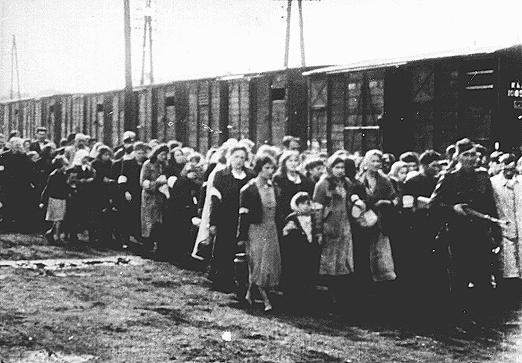22.7. 1942 Deportation of Jews from the Warsaw Ghetto began
Categories: Second World War , War crimes , Calendar

It looked like the usual raid and recruitment of new people into the forced labour units, but this time the atmosphere seemed to be charged with the premonition of disaster. In July 1942, the deportation of Jews from the Warsaw Ghetto began.
In July, all Jews observe a day of mourning. In the Warsaw Ghetto they felt their grief even more keenly than Jews in other countries. It was the day of the destruction of the Jerusalem Temple by the Babylonians and the Romans. But it was in 1942 that the so-called Tisha Be'av fell at the very moment when it was decided to speed up preparations for the "final solution" of the Jewish question. While the Jews of Warsaw were mournfully recalling their old and new sufferings, German service wagons arrived in the ghetto and stopped in front of the house where the Jewish Council was located.
At first they thought it was the usual raid and recruitment of new people for the forced labor units, but this time the atmosphere seemed charged with a premonition of disaster. The Germans were selecting only the very old and the very young. "When they rounded up the old men and the children they had snatched from the arms of their frightened mothers, panic broke out in the ghetto," writes Leon Uris in Exodus.
The Nazis formed a crowd of old people and children at the "assembly point" and led them to line up track, where a freight train stood ready, and where a bewildered and terrified crowd of relatives was already pressing in. The Nazis pointed their guns at the parents who wanted to rush to their children. They shot several of them. The children cheered up and started singing. The German guards promised them they would go to the countryside. "That was something wonderful! Most of the children had no memory of what it was like behind the wall surrounding the ghetto. The train got moving. The destination it was headed for was Treblinka and the final solution," Leon Uris describes the events even then.
By the end of September 1942, over a quarter of a million Jews had been transported from the Warsaw Ghetto to Treblinka. Before the final liquidation of the ghetto in April 1943, the Jews of Warsaw decided to revolt, which the German army put down only after months of fighting. Similar uprisings took place in smaller ghettos such as Bialystok and the extermination camps. The Sobibor revolt in October 1943 is one example.
After the mass deportations of Jews to the extermination camps began, some Poles became more interested in the fate of the Jews. "In 1942, for example, the Council for Aid to Jews (Źegota) began to operate in the General Government, thanks to which thousands of Jews were saved," writes Kateřina Králová in her book Returns: The Postwar Reconstruction of Jewish Communities in the Countries of Central , Southeastern and Eastern Europe.
Relations between Jews and Poles in the eastern Polish Kresy were even more complex. For many Poles, the image of Jews welcoming the Red Army with ovations and flowers in their hands after 17 September 1939 deepened anti-Jewish attitudes based on stereotypical notions of Jewish community. In the eyes of the Poles, Jews were the co-creators of the Soviet regime and therefore of Polish suffering.
At the same time, many Jews suffered similar fates as Poles during the Soviet occupation. "Of the hundreds of thousands of Polish citizens deported to the Soviet Union, Jews made up 20 to 30 percent, according to estimates by Polish historians. Deportation to Siberia or the Central Asian republics often saved their lives in the end, paradoxically. In fact, as many as 600 000 Jews perished in the first months after the German attack on the Soviet Union alone," says Králová.
Kateřina Králová, Returns: Postwar Reconstruction of Jewish Communities in Central, Southeastern and Eastern Europe, Leon Uris, Exodus, http://ww2today.com/
The article is included in categories: